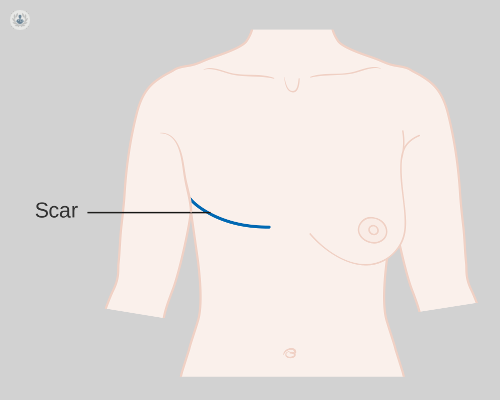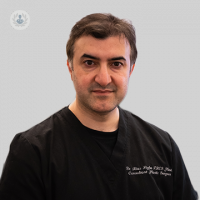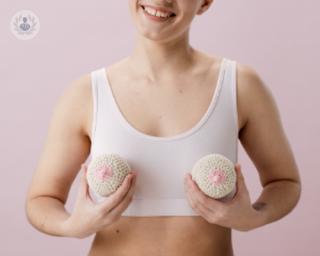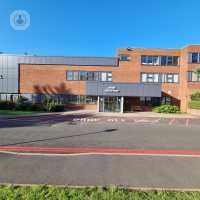Nipple-sparing mastectomy
What is a nipple-sparing mastectomy?
A nipple-sparing mastectomy, also known as an areola-sparing mastectomy or subcutaneous mastectomy, is a surgical procedure used to remove breast tissue and at the same time, preserve the skin, areola, and nipple. These are left fully intact so that the surgeon can place implants or your own donor tissue (taken from another part of your body) inside to make a new breast. After a nipple-sparing mastectomy, the nipple won’t have feeling. This operation is performed while the patient is under general anaesthesia.

Why is it done?
The benefit of a nipple-sparing mastectomy is largely cosmetic. It’s an approach to mastectomy that allows the breast to look as close to natural as possible – the term 'natural' meaning the breast’s previous aesthetic appearance before surgery. In some mastectomies, the nipple must be removed and this can affect women psychologically due to the change in their appearance. A nipple-sparing mastectomy reduces this risk.
What does a nipple-sparing mastectomy involve?
To perform the procedure, an incision could be made in one of several ways. The type of incision depends on where the cancerous breast tissue is and the shape and size of an individual patient’s breast. For example, an incision could be made around the side of the breast, under it, or beside the nipple.
During the procedure, the surgeon will remove as much of the breast tissue as possible to prevent the chance of leaving any cancerous tissue. If the nipple is shown to have cancerous cells, a nipple-sparing mastectomy will not be possible and the nipple will also have to be removed.
If you are preparing to undergo a mastectomy, you may be offered a breast reconstruction in the same procedure as a mastectomy, in which an implant or the patient’s own natural tissue is used. However, it’s also possible that this is performed as a second operation at a later date. This decision is made on a case by case basis.
How do you prepare for a nipple-sparing mastectomy?
Before undergoing a nipple-sparing mastectomy, you will have discussed alternative mastectomy procedures and concluded which is best for you based on your breast cancer and your personal requirements.
It’s important to discuss the realistic expectations after a mastectomy regarding the aesthetic appearance of the breasts. Even with a nipple-sparing mastectomy, it’s not possible to make an exact replica of your breasts before a mastectomy, but a nipple-sparing procedure offers the closest result.
- The breasts may have scarring (visibility will depend on where the incision is made)
- The shape might be different from your previous breast shape
- Your breast(s) will not have the same sense of feeling as before.
- If having a single mastectomy, the breast may not match your natural breast exactly
Discuss medications with your breast surgeon. This is highly important because some medications can interfere with surgery - you may be asked to stop taking them for a specific amount of time before your surgery. You’ll be directed by the medical team in terms of when you must stop eating or drinking before the operation.
If you need radiotherapy after surgery, you’ll need to discuss how this impacts your breast reconstruction options.
Aftercare
After surgery, you might have small plastic drainage tubes inserted where the breast tissue was taken out and these aim to drain fluids that can build up after surgery into a small bag.
A dressing will be placed over the area that the surgery was performed on and you will be guided on how to care for the site and not risk opening the incisions while they heal.
You’ll also be guided on when you can wear a bra again. You will also discuss pain medication with a member of your medical team before leaving the hospital.
If you’ll be undergoing further cancer treatment e.g. radiotherapy or chemotherapy , you’ll have a consultation with an oncologist. If you have a nipple-sparing mastectomy but not a reconstruction, you will speak to a plastic surgeon to discuss your reconstruction options.
What are the alternatives to a nipple-sparing mastectomy?
Alternative mastectomies are:
- Standard mastectomy – all breast tissue and skin covering the breast is removed.
- Skin-sparing mastectomy – all breast tissue and nipple is removed, but skin covering the breast is left.
- Radical mastectomy – a rare procedure where all tissue, skin and nipple is removed as well as the muscles behind the breast and the lymph nodes in the armpit.
- Modified radical mastectomy – the same as above, except the muscles behind the breast are not removed.






